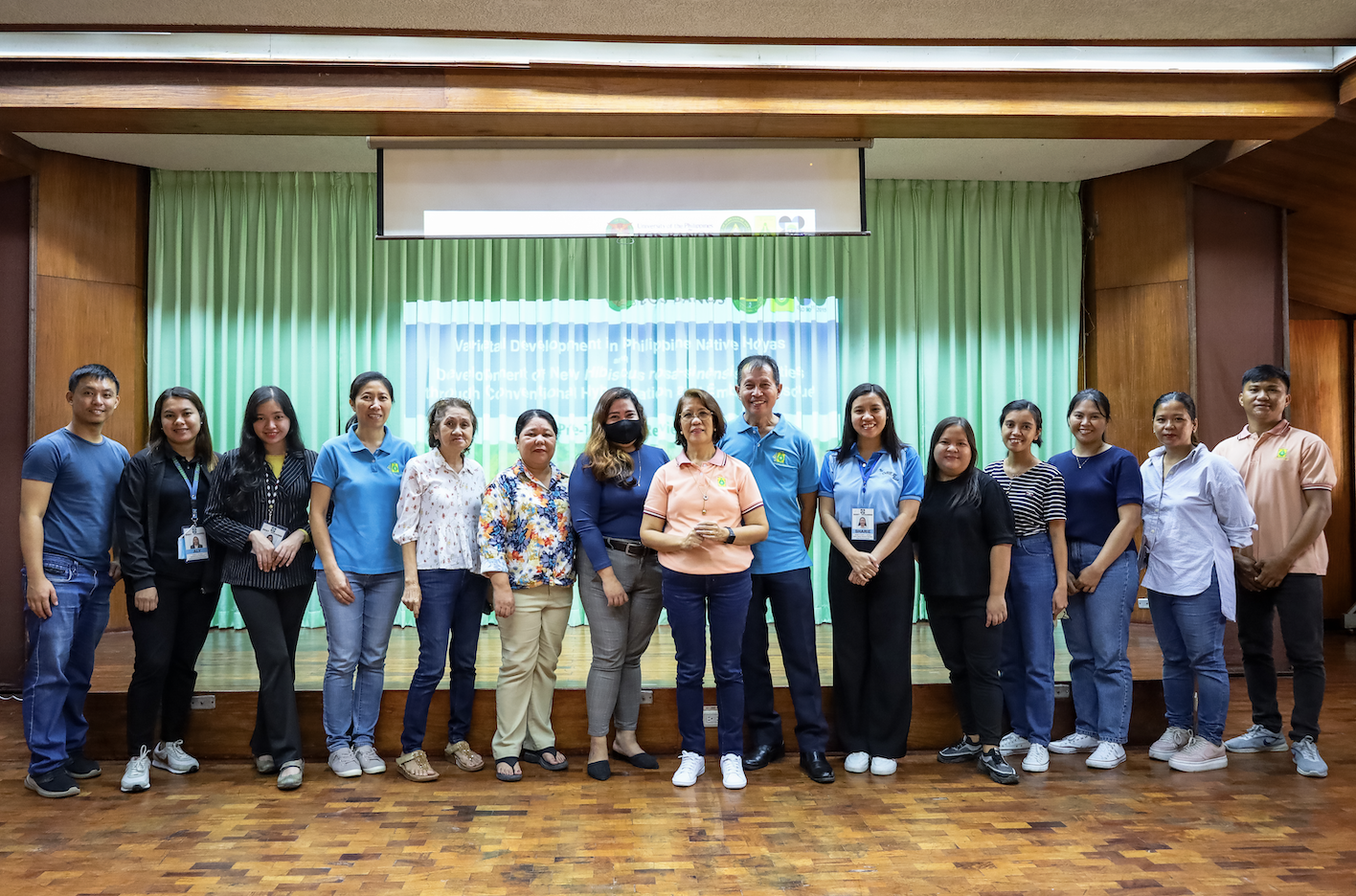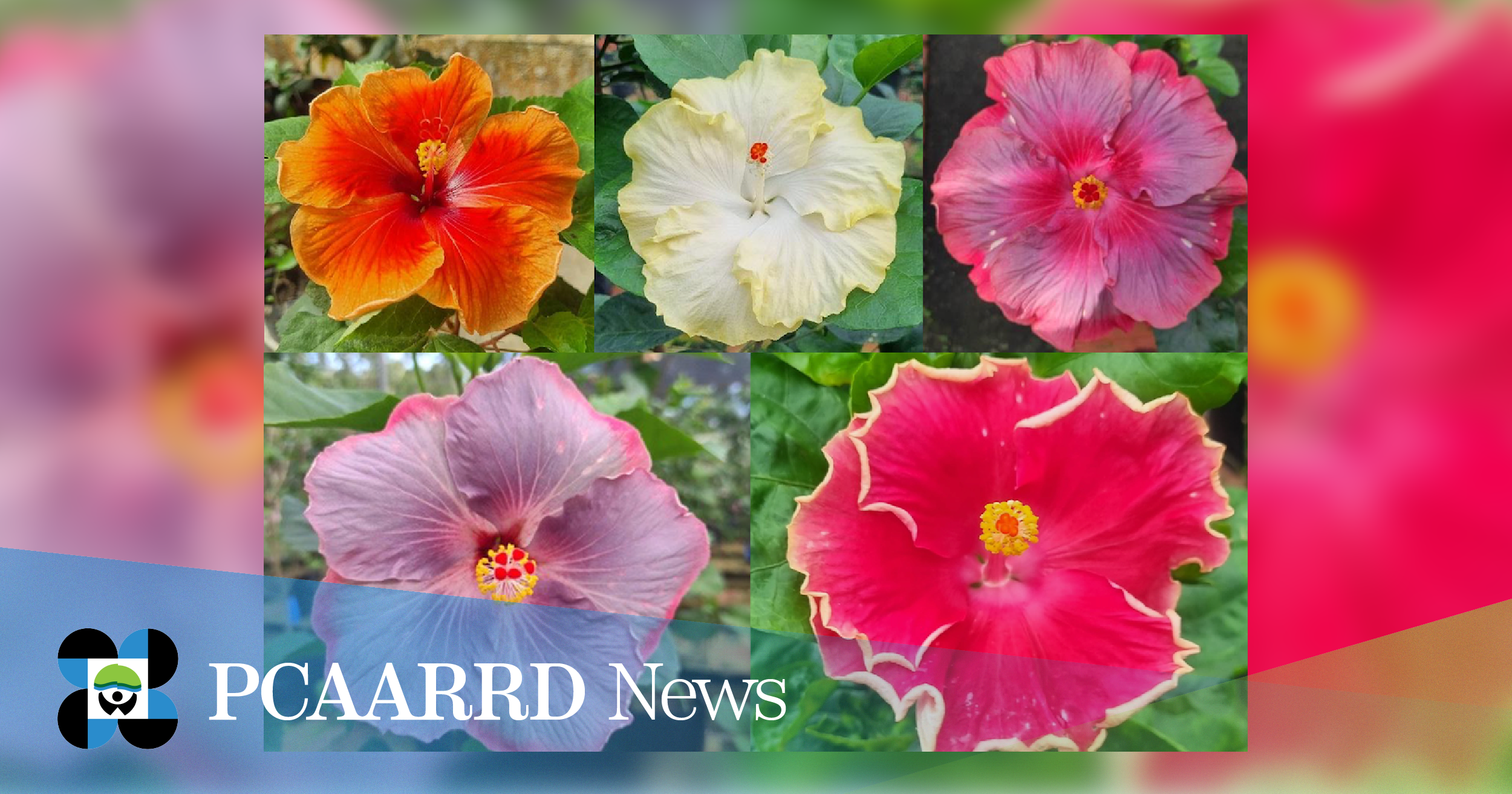A breeding project progresses with newly developed hibiscus varieties and selections through the funding and support of the Philippine Council for Agriculture, Aquatic and Natural Resources Research and Development of the Department of Science and Technology (DOST-PCAARRD).
While the international market offers imported multi-colored varieties, they often flower poorly under the tropical conditions of the Philippines.

Garden-type hibiscus hybrids for submission to GTRRO of IPB-UPLB (from upper left to right: ‘CH21-25-1,’ ‘CH21-23-6,’ ‘CH21-48-1,’; from lower left to right: ‘CH21-25-2’ and ‘CH21-20-1’). (Image credit: Institute of Plant Breeding, University of the Philippines Los Baños)
The project, "Development of New Hibiscus rosa-sinensis Varieties through Conventional Hybridization and Embryo Rescue," aims to fill this gap by developing novel and locally adapted hibiscus varieties under the leadership of Dr. Maria Luisa D. Guevarra of the Institute of Plant Breeding of the University of the Philippines Los Baños (IPB-UPLB).
In an annual project review and field monitoring visit, Dr. Guevarra shared that their third and final year of implementation led to the development of 64 new garden-type hybrids by crossing local garden-type hibiscus with selected international varieties.
Five new promising hybrids were selected by the team and are being propagated for their registration to the Germplasm and Technology Release and Registered Office (GTRRO) of IPB-UPLB.
The team also successfully produced 22 seedlings by crossing petite and compact local-bred varieties with multi-colored foreign varieties. One petite variety was submitted to GTRRO for registration, while two potential hybrids are undergoing further characterization and evaluation.

Hibiscus hybrid seedlings maintained at the IPB-UPLB nursery. (Image credit: Crops Research Division, DOST-PCAARRD)
Meanwhile, the crossing of two species (H. tiliaceus x H. rosa-sinensis) produced 47 interspecific seedlings and one seedling from its reciprocal cross (H. rosa-sinensis x H. tiliaceus).
Breeding experts, Mr. Reynold B. Pimentel from Del Monte Philippines, Inc. and Mr. Fernando B. Aurigue from the Philippine Nuclear Research Institute (PNRI) of DOST, served as Science and Technology (S&T) Consultants and evaluated the project’s accomplishments.
IPB Director Fe M. dela Cueva, Project Consultant Agripina O. Rasco, and the IPB project team also attended the review, along with key DOST-PCAARRD staff led by Crops Research Division (CRD) Program Monitoring and Evaluation (PME) Section Head Sharie Al-Faiha A. Lubang and ISP Manager for Ornamental Plants Kimberly Zarah B. Locsin.

The DOST-PCAARRD and IPB teams during the annual project review (left) and field monitoring visit (right) of the project, “Development of New Hibiscus rosa-sinensis Varieties through Conventional Hybridization and Embryo Rescue.” (Image Credit: Crops Research Division, DOST-PCAARRD)

